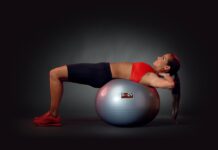
Tap dancing is a vibrant expression of rhythm and creativity that brings joy to both dancers and audiences alike. Whether you’re drawn to the sharp, syncopated beats or the sheer joy of dancing, this is a fun, unique, and beneficial hobby. From improving your coordination and balance to giving you a fantastic cardio workout, tap dancing is a great way to stay active while indulging in a creative outlet.
But to truly master the art, you need the right gear. You can elevate your performance from good to extraordinary with a high-quality tap shoe design from top brands. They’re created to deliver the sharp, resonant sounds that every dancer strives for. This hobby can be demanding on your feet, and that’s where the design of these shoes shines.
Their construction includes soft and durable leather material that offers the support you need during those long practice sessions. The materials are also breathable, keeping your feet comfortable even after hours of dancing. Let’s go through everything you need to know to choose a pair that will keep you stepping in style.
Construction

When it comes to choosing the perfect tap shoes, one of the most important factors to consider is their construction. Let’s start with the heel – this part of the shoe plays a key role in both stability and style. Depending on your preferences or the style of dance you’re performing, it can vary in height. For instance, theatrical performers might opt for a higher heel when portraying a feminine character.
Typically made from wood or stacked leather, this element ensures that you have the support you need while dancing. The height usually ranges from one inch or more, providing a solid foundation for your movements. Another crucial component is the toe box, found at the front of the tap shoe. This area is designed to protect your toes while also helping you execute powerful, precise movements.
Made from thick, reinforced material, the toe box produces that deep, resonant sound tap dancers are known for. It’s the part that allows you to dig in and create those sharp, lively rhythms. Then there’s the topline, the edge running along the opening of the shoe. The topline can either be higher or lower depending on your needs. A lower topline offers greater ankle flexibility, while a higher one provides more stability.
This feature ensures that your shoes fit well and give you support during complex routines. Lastly, the taps are the metal pieces attached to the bottom, under the heel and the toes, and they’re what give tap dancing its signature sound. Their quality can vary, with different materials affecting the pitch and depth of the sound. Some brands, like Bloch, use composite alloy for these elements to produce a distinct, rich tone.
Different Types
The tapping shoes come in styles to meet the unique needs of different dancers, from beginners to professionals:
- Full sole: These have a continuous sole underneath, offering solid support for your feet and ankles, making them ideal for dancers who need extra stability;
- Split sole: Similar to split sole jazz shoes but with taps attached, this footwear type has a flexible base with a gap under the arch, allowing for greater movement and flexibility.
In addition, this footwear also comes with different types of fastening, each offering its own benefits depending on your needs and preferences:
- Slip-on: Usually featuring a split sole, these shoes are easy to slide on, saving you time and allowing for quick changes during practice or performances;
- Lace-up: A versatile choice for all levels, lace-up footwear lets you adjust the fit to your liking, providing a customisable experience for different foot widths;
- Buckle: Often seen in Mary Jane styles, especially for women and girls, buckle fastenings offer a secure fit and allow for smooth movements, particularly in higher-heeled shoes.
Combatting Slipperiness

When tap shoes are new or worn out, they can feel slippery, which can be dangerous and lead to falls. If you’re shopping for a new pair that won’t slip, Bloch offers a great solution with their non-slip pro balance rubber pad. This feature provides a secure grip and helps level the sole, giving you better balance while dancing.
For existing shoes that feel slippery, there are a few things you can try. Breaking in is important because the metal taps need time to adjust. Wearing them around the dance studio or on safe surfaces at home can help improve traction. It’s also a good idea to regularly check the condition of your taps and the screws holding them in place.
Worn-out taps or loose screws can cause slipping and may even damage the dance floor. If you notice any issues, consider replacing them or tightening the screws. Another option is to use a non-slip professional rosin spray. Applying this to the soles can increase traction and reduce slipping.
How Do I Clean My Tap Dance Shoes?
The tap shoes generally stay clean since they’re typically worn indoors, but that doesn’t mean you’re entirely free from the cleaning chore as stains could still appear. How you clean them will depend on the construction. For leather footwear, use a renovating polish or standard leather cleaner and apply it with a soft cloth to remove scuffs. Patent footwear can be gently wiped clean with a wet wipe or a damp cloth. If you have canvas or fabric shoes, a damp cloth and mild detergent would do.















